Flowers and Plants on Romney Marsh
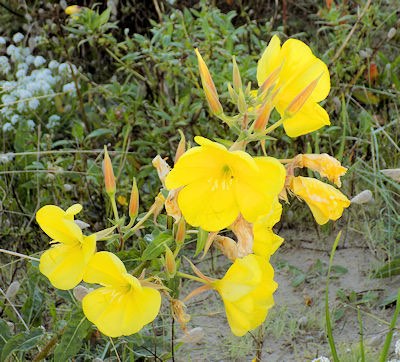

The British Bluebell is common all over Romney Marsh. They are unmistakable bell-shaped perennial herbs. They actually spend the majority of their time underground as bulbs, emerging, often in droves, to flower from April onwards.
Leaves: are narrow, around 7mm to 25mm wide, and 45cm in length. They are strap-shaped, smooth, and hairless, with a pointed tip.
Flowers: usually deep violet-blue in colour, bluebells are bell-shaped with six petals and up-turned tips. These sweet-smelling flowers nod or droop to one side of the flowering stem (known as an inflorescence) and have creamy white-coloured pollen inside. Some bluebell flowers can be white or pink. Up to 20 flowers can grow on one inflorescence.
Also found is the Spanish bluebell (Hyacinthoides Hispanic), which is very similar in appearance to the British bluebell. However, Spanish bluebells grow upright, with the flowers all around the stem, not drooping to one side like the British bluebell. Hybrid bluebell (Hyacinthoides x massartiana) is a mix of the British and Spanish bluebell.
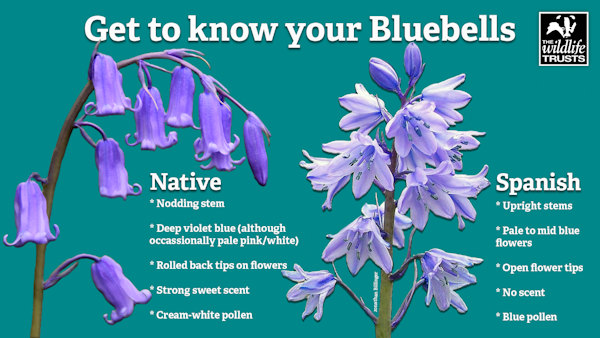

There are many varieties of Evening Primrose; this is the Common Evening Primrose that grows in the wild. It is a hardy plant that likes full exposure to the sun.
It is a biennial (this means it takes 2 years to complete its biological life cycle) and grows to approximately 1.5m tall.
The fragrant yellow flowers have only 4 petals and are approximately 5cm across. The blooms open at dusk, hence their name! They start as pale yellow, becoming more golden as they age through the night and they close by sunrise. They flower in the summer and autumn.
Common Evening Primrose can be seen widely across Romney Marsh, particularly on Greatstone Dunes and at Dungeness Nature Reserve

Evening Primrose

The Red Valerian plant is originally from the Mediterranean; it was introduced into gardens in the 17th century, however, it 'escaped' and became commonplace in the wild. it can be seen growing on the roadside, railways, rocks and urban wasteland. It is very distinctive with its cluster of small deep pink flowers on a tall stem.
It is perennial (this means that it lives for more than 2 years).
The individual flowers, with 5 fused petals, are only about 2cm long and 5mm across, but they flower in dense clusters forming an almost cylindrical head. It flowers from April to Ocober.
The Red Valerain blooms have a strong and unpleasant scent, but they are a good source of nectar for bees, butterflies and moths.
Although an attractive plant, it can become invasive and cause considerable damage, with roots that can be hard to get rid of.
The Red Valerian can be seen across the Romney Marsh area
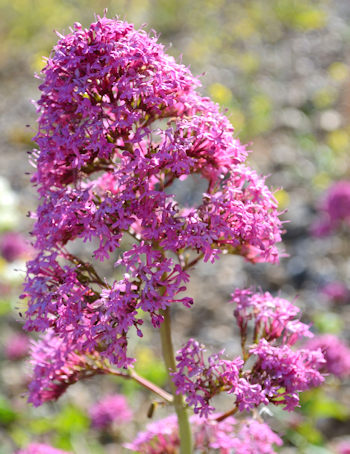
Red Valerian

Sea Kale is found on the sandy and shingle beaches of Romney Marsh, above the high tide mark. It is also found on the dunes, but only where there's an underlying layer of shingle.
Growing to 75 cm (30 in) tall by 60 cm (24 in) wide, it is a mound-forming, spreading perennial. It has large fleshy glaucous collard-like leaves and abundant white flowers. The seeds come one each in globular pods.
In summer it blooms with white flowers. As well reproducing by seed, sea kale can also grow from detached pieces of its root.
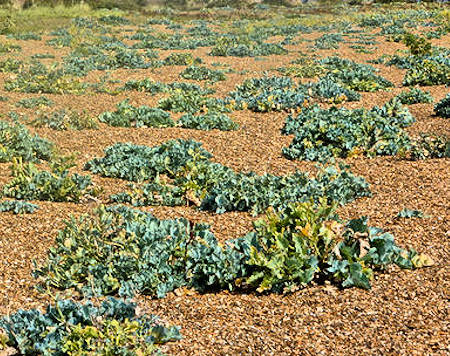
Sea Kale

Viper's-bugloss is a hairy plant with dense spikes of bright blue, funnel-shaped flowers. It has upright spikes of vivid blue flowers in dense clusters; hairy, spotted stems; and narrow, pointed leaves.
It is found all across Romney Marsh, particularly on chalk grassland, sand dunes, cliffs and disturbed ground It is in bloom from May to September and provides food for a range of insects, including Buff-tailed and Red-tailed Bumblebees, Large Skipper and Painted Lady butterflies, Honeybees and Red Mason Bees.
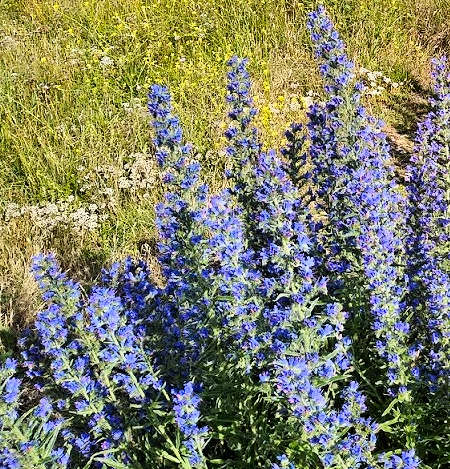
Viper's Bugloss



